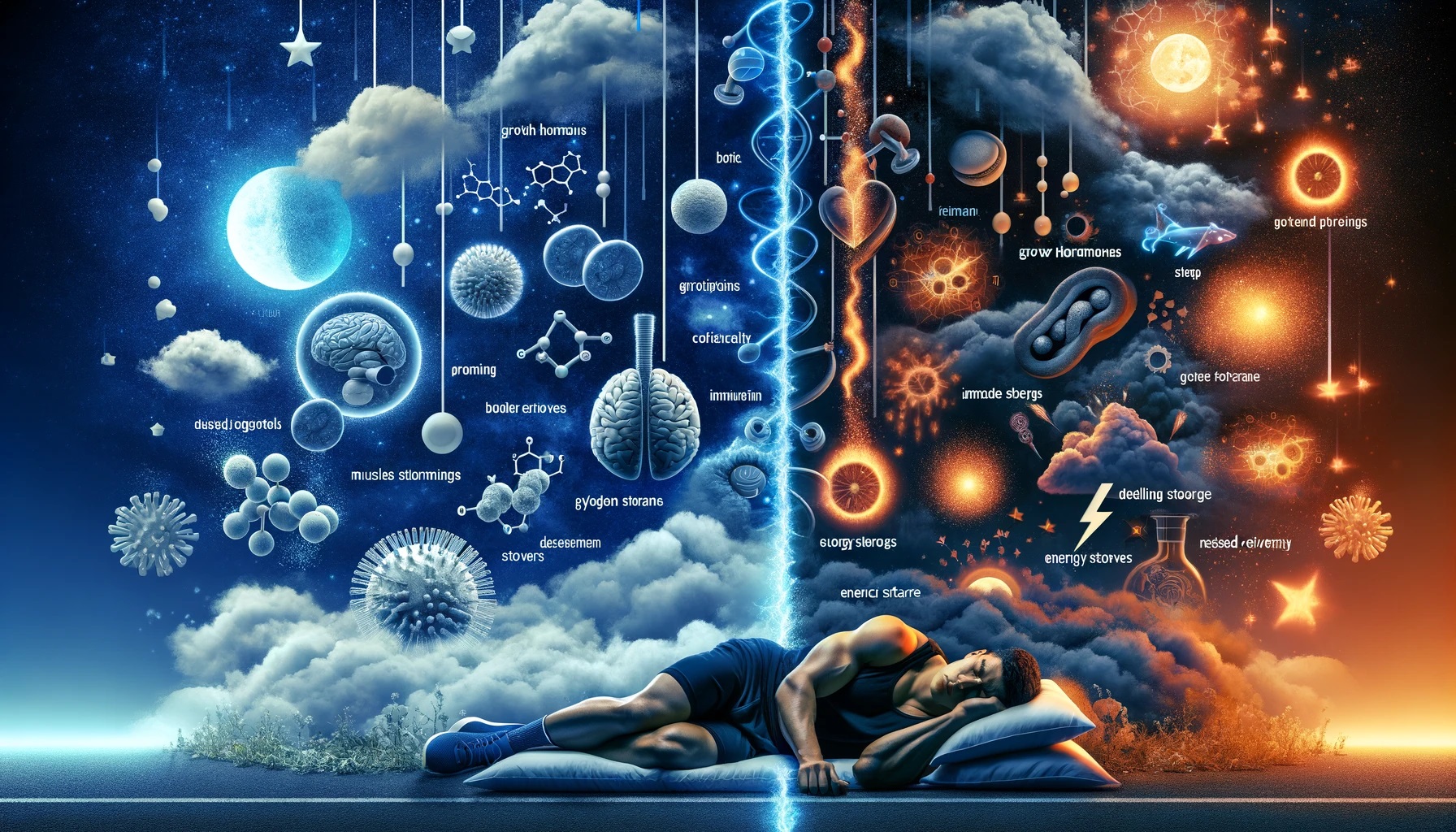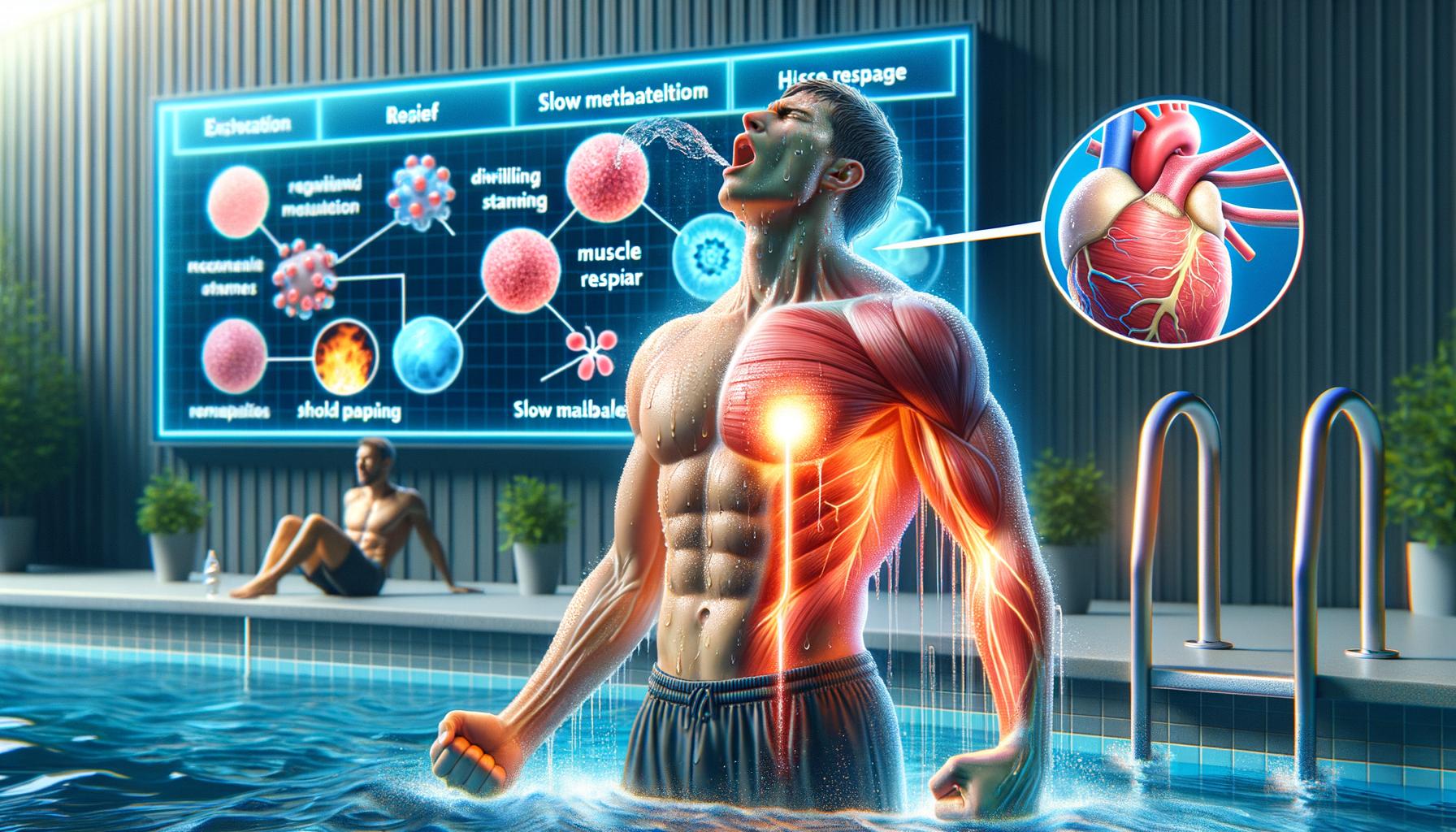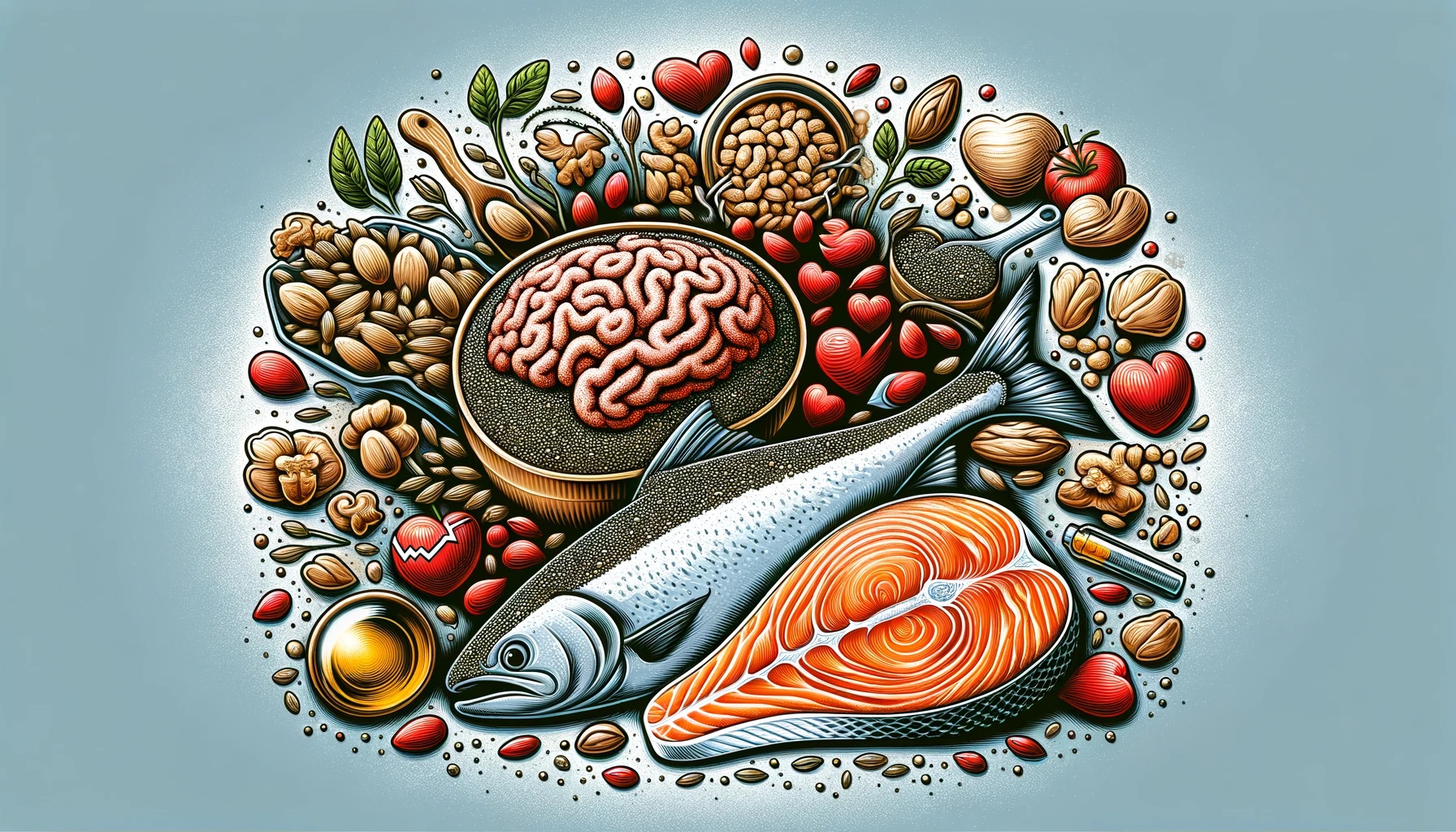· fitness · 16 min read
Rethinking Protein Timing for Muscle Growth
This article dispels the myths surrounding the anabolic window and protein timing for optimal muscle growth, and highlights the importance of overall daily protein intake.

In This Post
The Fact Why Should I Care How To Put In Action Start Tomorrow Guide How does it effect my ability to focus How does it impact my daily life How does it help me make friends How does it help me manage stress How does it effect my mood Summary: Remember Refresher Checklist The Full Research Article CitationsPrint Out The Tomorrow Checklist!
Sign up for our newsletter and receive a copy today, so that, you can start tomorrow! Or the next day, or the day after that. I forget everything and starting things is hard at least for me so these checklists are godsend.
Print Out The Remember Refresher Checklist!
Sign up for our newsletter and download your own copy of the Remember Refresher Checklist, so that, you can easily put it on your fridge and help you stay on target towards your WHY. Every little bit helps.
Breaking Down the Myth of the Anabolic Window
For years, fitness enthusiasts and athletes have been led to believe that consuming protein immediately after a workout is critical for muscle growth. This belief stems from the idea of the “anabolic window,” a specific short time period post-exercise during which your body supposedly is more receptive to protein, aiding in optimal muscle repair and growth. However, as we dive deeper into nutritional science, it’s becoming clear that this concept may be more myth than fact.
The anabolic window theory suggests that there’s a 30 to 60-minute window after resistance training when the body is particularly effective at converting the protein you consume into muscle mass. This has led to many gym-goers rushing to consume protein shakes immediately post-workout in hopes of maximizing muscle gains. Yet, recent studies are questioning this practice and suggest that the timing may not be as critical as once thought.
Checklist: Rethinking the Protein Timing Strategy
- Understand that the anabolic window is not as narrow as previously believed.
- Recognize the importance of total daily protein intake over specific timing.
- Pay attention to the body’s needs and how it responds to nutrient timing.
- Consider the quality and type of protein consumed, not just the timing.
- Stay informed about the latest nutritional science research for optimal results.
The Evolution of Nutritional Science
Nutritional science has made significant strides over the past few decades, shifting the way we understand diet, exercise, and body composition changes. As technology and research methods have evolved, so too has our understanding of how nutrients like dietary protein impact muscle repair, muscle protein balance, and overall athletic performance nutrition.
In the early days of nutritional science, research was limited, often leading to conclusions that lacked the depth and breadth of understanding we have today. As a result, concepts like nutrient timing and the anabolic window were based on preliminary findings and observations rather than comprehensive studies.
Today, advances in research are helping us to understand the complex relationship between exercise recovery, protein synthesis rates, and overall daily protein requirement. This evolving knowledge challenges previous notions and highlights the importance of considering the full spectrum of nutrient distribution, meal frequency, and resistance training in relation to muscle growth and body composition changes.
By keeping up with the latest in nutritional strategy and understanding the principles behind optimal protein dosage and protein absorption, we can make more informed decisions about our dietary practices. This includes recognizing that the anabolic timing may not be as crucial as once believed and that a more holistic approach to nutrition and exercise recovery may be the key to achieving our fitness goals.
Understanding Protein Synthesis
Protein Synthesis and Muscle Repair
Protein synthesis is the body’s way of building new proteins. This is crucial for muscle repair and growth. When you work out, your muscles go through a lot of stress, causing tiny tears. For these tears to mend and for the muscle to grow bigger and stronger, your body needs to produce more proteins. This is where dietary protein comes into play. Consuming enough protein provides your body with the amino acids it needs to fuel this repair process. Essentially, without enough protein, your muscles cannot properly recover or grow.
How Protein Timing Became a Popular Concept
Protein timing became a hot topic because of the belief in maximizing muscle anabolism - the process of building up muscles. It was thought that there was a specific “window of opportunity” after a workout when your muscles were primed to absorb the most protein for repair and growth. This led to many gym-goers rushing to consume protein shakes right after their resistance training sessions, thinking it would give them the edge in muscle hypertrophy (growth). The idea was based on earlier nutritional science that suggested fast-acting protein sources, like whey, were ideal post-workout for immediate protein absorption and muscle repair.
Is Timing Everything?
To dive deeper into the topic, here’s a breakdown of key points to consider when thinking about protein timing:
- Muscle Repair Needs: After an intense workout, our bodies do need amino acids to start the repair process.
- Window of Opportunity: The concept of an “anabolic window” has been widely popularized, suggesting a 30-60 minute post-workout period as critical for protein intake.
- Amino Acid Availability: Having a steady supply of amino acids from dietary protein throughout the day is essential for ongoing muscle protein synthesis.
- Nutrient Timing vs. Total Intake: There’s a debate on whether the timing of protein consumption is as critical as the total daily intake for muscle growth.
Protein Timing Checklist
- Understand that while protein post-workout can be beneficial, the entire day’s nutrition contributes to muscle repair and growth.
- Focus on meeting the daily protein requirement suitable for your level of activity and muscle growth goals.
- Spread protein intake evenly across meals to maintain a steady supply of amino acids.
- Remember that while protein timing can have its benefits, it shouldn’t overshadow other nutritional and lifestyle factors important for muscle health.
As we continue to examine the evolving understanding of protein synthesis in muscle repair and the popularization of protein timing, it’s clear that while strategic nutrient timing can have its place in a comprehensive nutritional strategy, it is the overall quality and quantity of dietary protein consumed throughout the day that plays a more pivotal role in promoting skeletal muscle hypertrophy and improving exercise recovery and body composition changes.
The Anabolic Window Debunked
Recent Studies and Findings
For years, gym-goers and athletes have been told about the critical importance of consuming protein immediately after a workout to maximize muscle growth. This concept, known as the anabolic window, suggests that there is a short period after resistance training when your body is exceptionally receptive to nutrients, particularly protein, for muscle repair and growth. However, recent studies have begun to question and, in many cases, debunk this widely accepted belief.
Research now indicates that the anabolic window is not as narrow as previously thought. A study published in the Journal of the International Society of Sports Nutrition highlighted that the window might extend far beyond the traditional 30-minute timeframe, even up to several hours after exercise. This shift in understanding is based on findings that muscle protein synthesis rates, the process through which muscle repair and growth occur, remain elevated for a considerable time post-exercise.
Furthermore, the emphasis on the immediacy of protein intake overlooks a crucial aspect of nutritional science: the total daily protein intake and its distribution throughout the day. Studies show that for optimal muscle protein balance and skeletal muscle hypertrophy, what matters more is meeting your daily protein requirement rather than rushing to consume protein the minute you drop your weights.
Experts’ Opinions on Protein Timing
Nutritional experts and sports scientists are now advocating for a broader approach to post-workout nutrition. Instead of focusing solely on the anabolic timing, the consensus is leaning towards the importance of nutrient timing, meal frequency, and overall dietary protein quality and quantity.
Experts suggest the following checklist for a more nuanced approach to protein intake and muscle growth:
- Focus on the Big Picture: Ensure you’re meeting or exceeding your daily protein requirement for muscle growth and repair.
- Distribute Protein Evenly Across Meals: Aim to include a source of high-quality protein in every meal to maintain consistent muscle protein synthesis rates throughout the day.
- Quality Over Timing: Prioritize high-quality sources of protein that provide all essential amino acids to support muscle anabolism.
- Listen to Your Body: Pay attention to how your body responds to different nutrient timing strategies and adjust accordingly.
- Stay Hydrated: Don’t forget the importance of hydration, especially around your workout sessions.
In summary, while the precise timing of protein intake post-workout is not as critical as once thought, the overall focus should be on consuming adequate amounts of dietary protein each day. By emphasizing total daily intake and the distribution of protein across meals, individuals can support muscle repair, muscle growth, and exercise recovery without the stress of chasing the anabolic window.
This shift in perspective aligns with the broader evolution of nutritional science, which advocates for a well-rounded and sustainable approach to nutrition and athletic performance. By understanding that muscle protein synthesis rates and muscle repair benefit from a consistent supply of amino acids, fitness enthusiasts can make more informed choices that support their long-term health and body composition goals.
Optimizing Protein Intake Throughout the Day
When it comes to bolstering muscle growth, strategizing your protein intake across different meals throughout the day holds immense value. Rather than fixating on consuming protein immediately post-workout, distributing your protein consumption can offer more benefit for muscle protein balance and skeletal muscle hypertrophy.
The Importance of Total Daily Protein Intake
The cornerstone of a solid nutritional strategy for muscle gain is not the timing but rather the total amount of dietary protein ingested over the course of the day. Research consistently highlights that for individuals engaged in resistance training, aiming for a daily protein requirement that supports muscle repair and exercise recovery is critical. This not only fuels muscle anabolism but also aids in overall body composition changes.
The optimal protein dosage varies per individual based on factors such as intensity of resistance training, body weight, and overall health. However, aiming towards a ballpark figure as suggested by the International Guidelines on Protein Intake can serve as a good starting point for most.
- Determine your goal intake based on body weight and activity level
- Ensure this goal meets or exceeds International Guidelines recommendations
Strategies for Distributing Protein Across Meals
Adopting a nutrient distribution approach that emphasizes protein absorption at different times of the day can impact muscle protein synthesis rates positively. Here are several guidelines to optimize your protein intake:
- Include Protein in Every Meal: Aiming to include a source of protein in every meal helps maintain a steady supply of amino acids for muscle repair.
- Balance Meal Frequency: Eating 4-6 meals a day, each with a good protein source, can help meet your daily protein requirements and support muscle growth.
- Diversify Protein Sources: Combining various sources of dietary protein ensures a comprehensive profile of essential amino acids necessary for skeletal muscle hypertrophy.
Case Studies: Success Stories without Strict Timing
Numerous athletes and fitness enthusiasts have achieved significant muscle growth without adhering strictly to post-workout nutrition timing. By focusing on meeting their daily protein requirement and ensuring nutrient timing that suits their schedule and lifestyle, these individuals have challenged the traditional views on anabolic timing.
- John, a competitive bodybuilder, spreads his protein intake evenly across 5 meals, focusing more on his total intake rather than post-workout timing.
- Emily, an endurance athlete, ensures she includes a protein source in each meal, helping her recover from long training sessions without worrying about immediate post-exercise nutrition.
Practical Tips for Busy Lifestyles
Maintaining an optimal protein intake can seem challenging, especially for those with busy schedules. Here are some practical tips:
- Prepare in Advance: Meal prepping can save time and ensure you’re including protein-rich foods in your meals.
- Protein Supplements: Incorporating a protein shake or bar as one of your meals can be a convenient way to meet your protein needs on the go.
- Smart Snacking: Opt for snacks rich in protein like Greek yogurt or a handful of nuts to boost your intake between meals.
By shifting the focus away from the rigid anabolic window concept to a more flexible approach in nutrient timing, you’re more likely to achieve sustainable muscle growth and improvement in athletic performance nutrition. Remember, consistency and a comprehensive nutritional strategy tailored to your lifestyle and goals are key to maximizing muscle anabolism and achieving the desired body composition changes.
FAQs
Is the Anabolic Window a Myth?
The concept of the anabolic window suggests a limited time after exercise when your body is supposedly more receptive to using protein for muscle repair and growth. However, recent research challenges this idea, indicating that the window is much larger than previously thought or may not be as crucial as once believed.
- Understand that protein absorption and muscle repair can occur over several hours post-exercise.
- Recognize that daily protein requirement and overall nutrient timing are more significant than a strict post-workout window.
- Consider the importance of meal frequency and nutritional strategy over the entire day for optimal muscle anabolism.
How Much Protein Should I Consume Daily for Muscle Growth?
Daily protein intake is crucial for muscle growth, especially for those engaged in resistance training. The amount of dietary protein needed can vary based on body composition changes, the intensity of the workout, and individual goals.
- Aim for a dietary protein intake of 1.6 to 2.2 grams per kilogram of body weight, as suggested by studies on optimal protein dosage for skeletal muscle hypertrophy.
- Adjust protein intake based on workout intensity and body composition goals.
- Ensure nutrient distribution across all meals to maintain a positive muscle protein balance throughout the day.
Can I Still Build Muscle If I Don’t Consume Protein Immediately After a Workout?
Yes, you can still build muscle without adhering to a strict post-workout nutrition timeline. Muscle growth is influenced by total daily protein intake and the consistent supply of amino acids to muscle tissues, rather than just the timing of protein consumption after a workout.
- Focus on meeting your daily protein requirement rather than just the post-workout meal.
- Incorporate protein sources in meals throughout the day to support continuous protein synthesis rates.
- Remember, exercise recovery and muscle repair benefit from a balanced approach to nutrition that includes nutrient timing but isn’t limited by it.
The discussion around workout nutrition myths, including the anabolic window, is evolving with nutritional science. While the timing of protein intake might have its benefits, especially for athletic performance nutrition, it is the holistic approach to dietary habits, focusing on sufficient protein absorption, meal frequency, and maintaining an overall muscle protein balance that truly supports muscle growth and repair.
Conclusion
After delving into the intricacies of protein timing, muscle growth, and the myth of the anabolic window, it’s clear that our understanding of nutritional science requires constant reevaluation and adjustment based on the latest research and scientific evidence. The journey through the evolution of protein synthesis rates, the debunking of the anabolic window, optimizing daily protein intake, and addressing frequently asked questions, brings us to a pivotal moment where we must revise our approach to protein intake for muscle growth.
Revising the Approach to Protein Intake for Muscle Growth
The conversation around protein intake, particularly in the context of muscle repair and growth, has long been dominated by the concept of nutrient timing. The traditional belief held that consuming protein immediately post-workout was crucial for maximizing muscle anabolism. However, as we’ve explored throughout this article, recent studies and expert opinions suggest that this focus on precise timing might be less critical than previously thought.
Instead, the emphasis should shift towards the overall daily protein requirement, nutrient distribution, and meal frequency. These factors play a more significant role in promoting skeletal muscle hypertrophy and improving body composition. It’s not just about the immediate post-workout nutrition but how you fulfill your protein intake recommendation throughout the day.
Checklist for Revising Your Protein Intake Strategy:
- Understand Your Daily Protein Requirement: Calculate your optimal protein dosage based on body weight, level of physical activity, and fitness goals.
- Distribute Protein Evenly Across Meals: Aim for a balanced nutrient distribution to maintain a positive muscle protein balance throughout the day.
- Prioritize High-Quality Protein Sources: Focus on dietary protein sources rich in essential amino acids for better protein absorption and muscle repair.
- Consider Your Lifestyle and Preferences: Adjust meal frequency and nutrient timing to fit your schedule and preferences, ensuring consistency and adherence.
By adopting a more holistic approach to protein intake and focusing on these key areas, individuals can support their muscle growth goals more effectively. It’s crucial to listen to your body, adjust as necessary, and remember that consistency over time is what leads to lasting changes in muscle mass and strength.
In summary, while the concept of post-workout nutrition and the anabolic timing window has influenced our nutritional strategies for muscle growth, the latest evidence suggests that we should rethink and adjust our focus. It’s the total daily intake of high-quality protein, evenly distributed across meals, that truly supports long-term muscle anabolism, recovery, and hypertrophy. As the field of nutritional science continues to evolve, so too should our understanding and approaches to optimizing protein intake for maximum muscle growth.
3 Relevant External Links
To deepen your understanding of protein intake and muscle growth, we have selected three impactful resources that align with current scientific insights. These resources will provide you with a broader perspective on dietary protein, nutrient timing, and how they relate to muscle anabolism and athletic performance. Each link has been chosen for its authority, depth of analysis, and relevance to our discussion on rethinking protein timing for muscle growth.
International Guidelines on Protein Intake
The International Society of Sports Nutrition Position Stand on Protein and Exercise is an essential read for anyone looking to grasp the scientific consensus on protein absorption, daily protein requirement, and the role of dietary protein in skeletal muscle hypertrophy. This document breaks down complex nutritional science into actionable guidance, emphasizing the importance of total nutrient intake over anabolic timing.
Expert Recommendations on Nutrition & Exercise
Another valuable resource is the American College of Sports Medicine on Nutrition and Athletic Performance. It provides expert recommendations that integrate the latest research on nutritional strategy, exercise recovery, and body composition changes. This comprehensive guide covers everything from protein synthesis rates to nutrient distribution, offering a well-rounded view on achieving optimal athletic performance through nutrition.
In-depth Protein Intake Analysis
For those interested in diving deeper into the nuances of protein intake recommendation and workout nutrition myths, Examine.com’s Analysis on Protein Consumption is a treasure trove of information. This analysis cuts through common misconceptions, presenting data-driven insights on optimal protein dosage, meal frequency, and the impact of nutrient timing on muscle protein balance.
Further Engagement Checklist
- Read the International Society of Sports Nutrition Position Stand to understand the foundation of protein intake guidelines.
- Explore the American College of Sports Medicine’s document for a comprehensive view on nutrition and athletic performance.
- Dive into the in-depth analysis provided by Examine.com to debunk common myths about protein consumption.
- Implement the findings and recommendations from these resources into your nutritional strategy.
- Monitor your body’s response to adjustments in protein intake and meal frequency, noting any significant changes in muscle repair and growth.
Rounding off your journey through the ever-evolving realm of nutritional science and muscle growth, we encourage you to explore these resources. Armed with a wealth of knowledge grounded in the latest research, you can craft a dietary strategy that supports your fitness goals, transcending outdated myths about protein timing.





